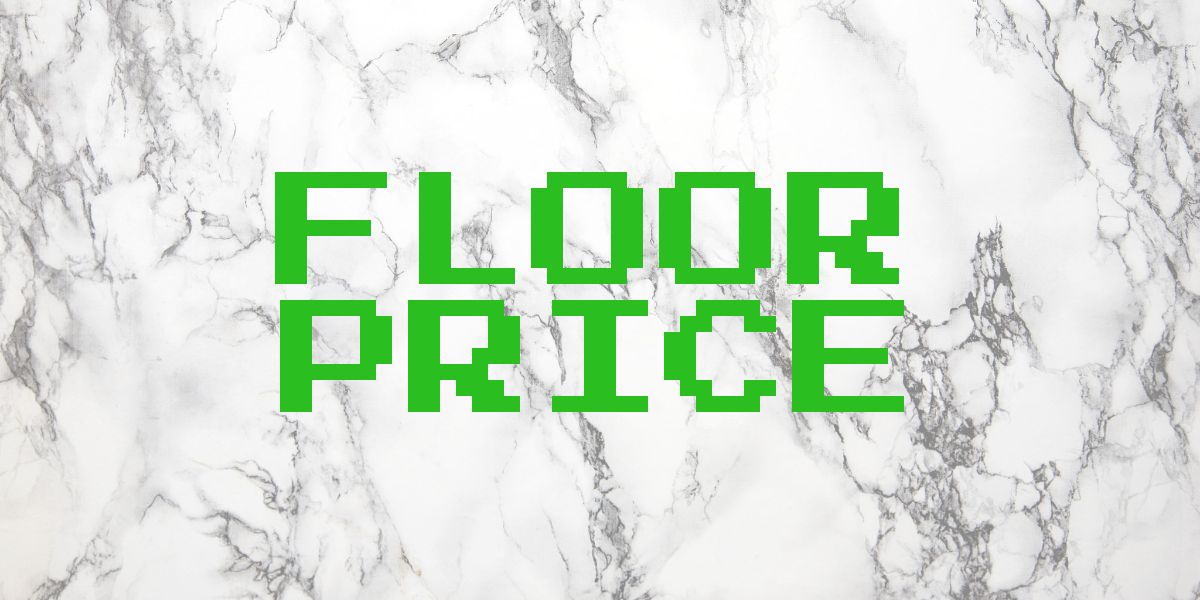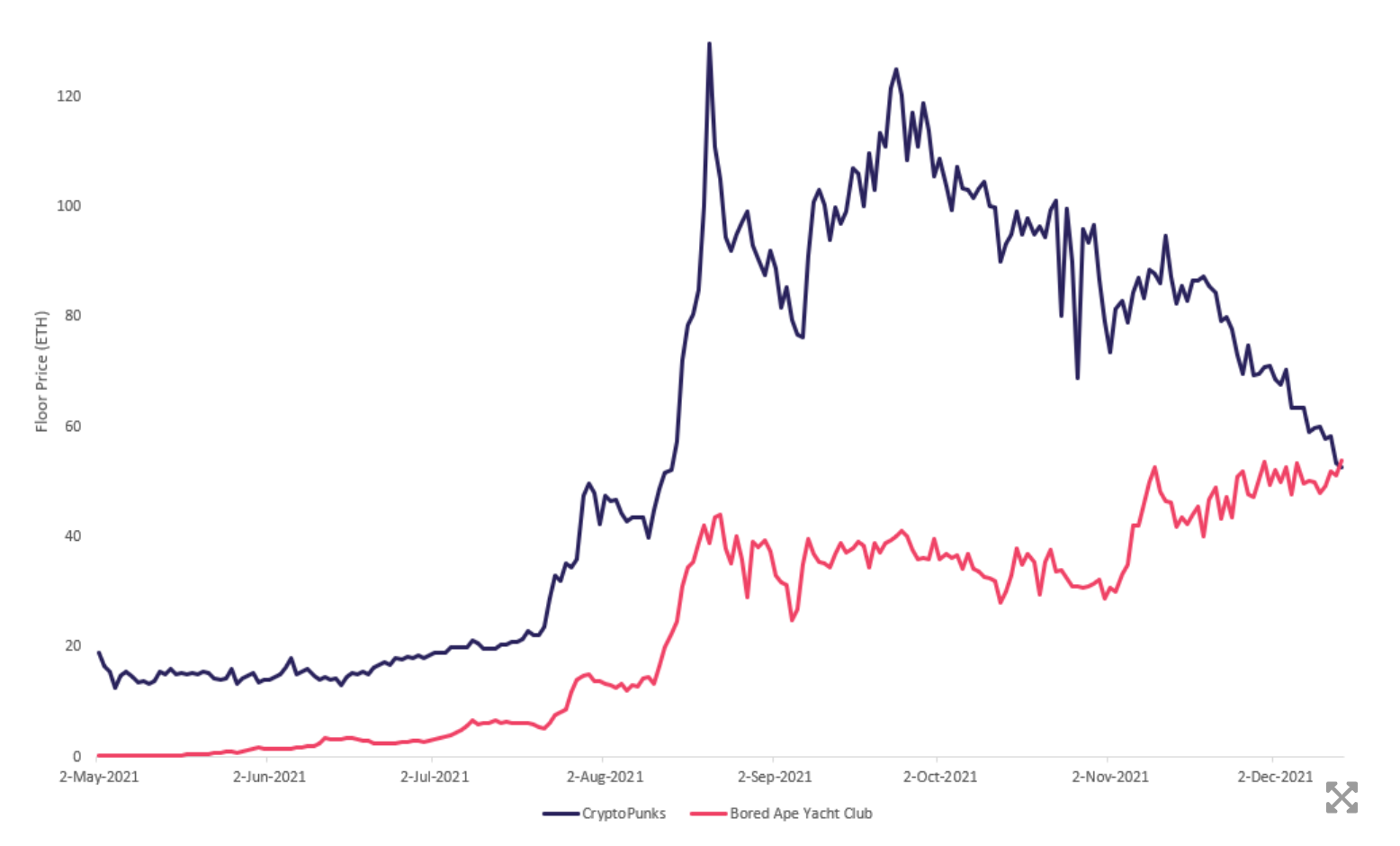What is Floor Price Meaning in NFTs? A Simple Explanation
If you spend any time reading about NFTs on Twitter, you'll see people talking about 'floor price'. In this post, we'll explain the floor price in NFTs, where to find it, and show how to use it.

If you spend any time reading about NFTs on Twitter, you'll see people talking about 'floor price'. In this post, we'll explain the floor price in NFTs, where to find it, and show how to use it.
What is the Floor Price for NFTs?
The floor price is essentially the lowest sale price for an NFT from a certain collection. It could the price of the latest transaction or the listed price right now.
Importantly, the floor price is updated in real-time. The floor price changes every NFT sold or listed.
Why do floor prices matter?
Every NFT is unique. Each token has different attributes, that make some rare or more sought after. As a result, NFTs are hard to value. So the floor price at least shows the lowest price at which an NFT should sell on the market.
Of course, the floor price does not guarantee that you will be able to sell it.
Where to Check NFT Floor Price?
On some NFT marketplaces, you can easily find the floor price.
For example, on OpenSea you can click on any collection from the ranking and you'll see the floor price at the top. On OpenSea it's the lowest price that is currently available in a collection and is updated by the hour.

On other platforms, the floor price might be calculated differently.
If something is simply listed for sale it doesn't mean that it would actually sell at that price. So historic floor price (recorded on the blockchain) could offer a better estimate of the NFT value.
Example: Floor Price for Cryptopunks vs BAYC
The two most carefully watched floor prices are for CryptoPunks and Bored Apes Yacht Club (BAYC), the leading PFP NFTs collections.
Some rare CryptoPunks sell for millions of dollars. The floor punk all-time high was over 120 ETH. Since then it has declined and in general was quite volatile.
Meanwhile, BAYC floor price has steadily increased over the past few years.

Of course, the floor price alone doesn't show the full picture. Yet it's a useful metric for evaluating large NFT collections.
What is Floor Price Cap?
Some people came up with the idea of measuring the market capitalization of the NFT collection.
Just multiply the floor price by the number of NFTs in the collection and get the so-called 'floor price cap'. Or floor price capitalization.

Clearly, it's not an ideal metric, because it uses the cheapest NFT to estimate the value of the whole collection.
Warning: Floor Price Manipulation
Because price floor is a common way of estimating and tracking the value of NFTs, it could be gamed.
Most NFT holders want to pump the market.
For example, if there aren't that many NFTs on the market, owners might list their pieces for exorbinant price without planning to sell them. In the absence of other sellers, that high price would show up as the floor even nobody would buy at that level. Or they might sell their own NFTs to their other wallets, bringing the price up.
Some might also try to crash the market.
If a large holder wants to scoop more JPEGs, they can first sell some of their common NFTs. This could scare some holders to cashout and sell their tokens before the price goes even lower. The manipulator can even set up a bot to list an NFT at a low price and immediately buy it with the bot with their other wallet.
That's why on CryptoTwitter you can also find lots of calls to exhibit 'dimond hands' instead of 'paper hands'. That's a call to avoid selling NFTs at low prices (paper hands). Hodl till the moon (diamond hands).
Your Time to Research Floor Prices
In this post, we've defined the floor price for NFTs, reviewed an example of how to use it, and then explored how the floor price could be manipulated.
If you're interested in learning more about the NFT market, sign up to our newsletter to get coverage of the most sought-after NFT collections.